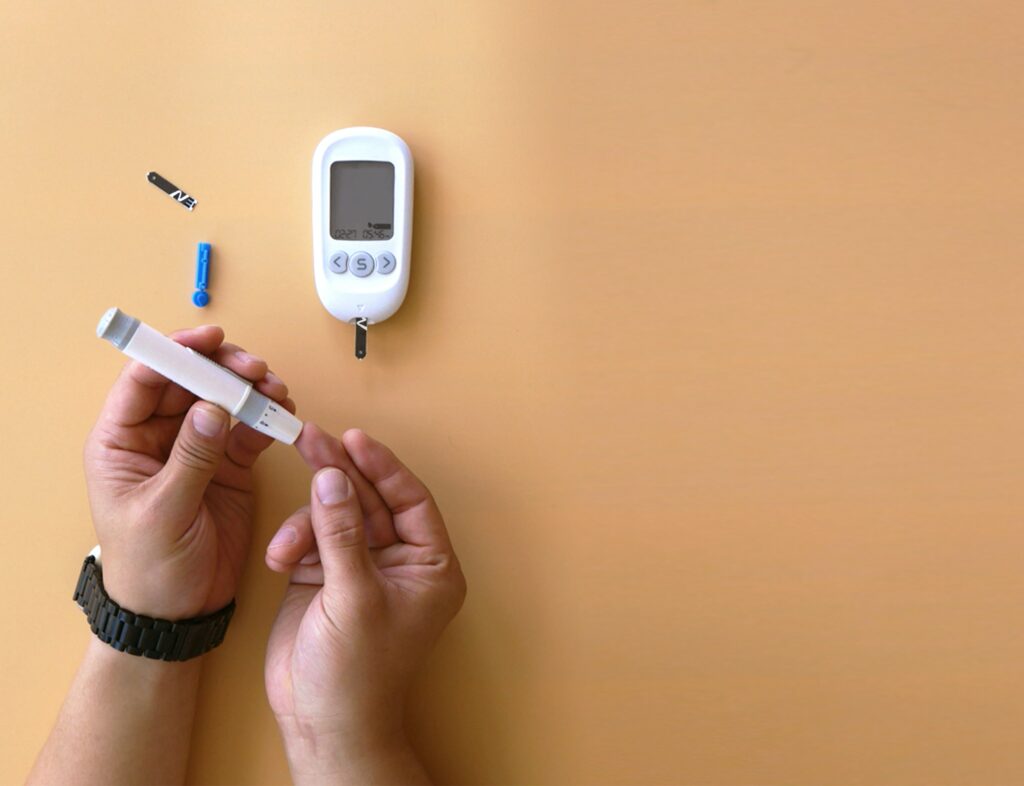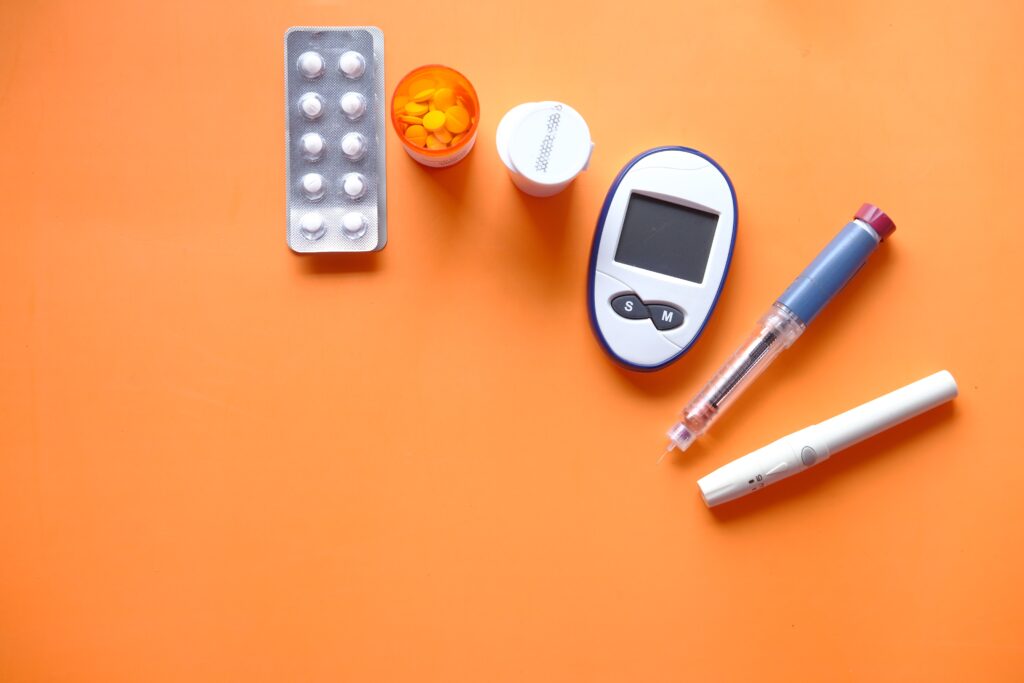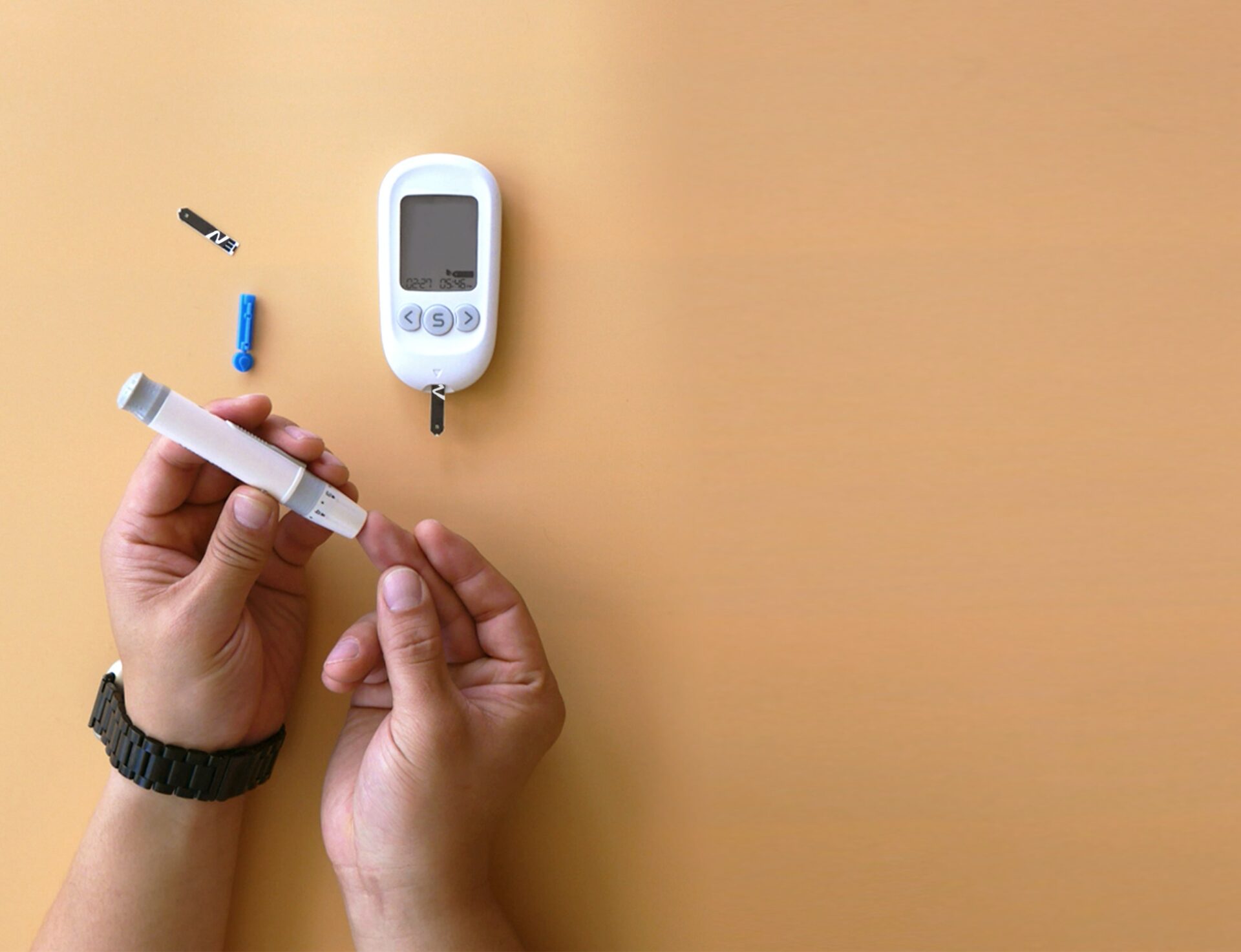What is Diabetes?
November is diabetes awareness month, so what better time to learn about diabetes? Make sure you read our article that focuses more on diabetic foot care and the importance of working with a podiatrist if you currently suffer from diabetes.
The number of Americans living with diabetes is staggering. 1.4 million Americans are diagnosed with diabetes each year. If you think that’s alarming, consider the fact that 97 million American adults are living with prediabetes! With over 10% of the U.S. population living with diabetes, we are a nation hugely affected by this disease.
Diabetes mellitus refers to a group of diseases that affects how the body uses blood sugar or glucose. There are different causes and types of diabetes.
The Different Types of Diabetes:
- Type 1 Diabetes
- Type 2 Diabetes
- Prediabetes
- Gestational Diabetes
Insulin is a hormone that originates in the pancreas. The pancreas is a gland located behind and below the stomach. Insulin is released by the pancreas to lower the amount of sugar in the bloodstream. As your blood sugar level drops, so does the secretion of insulin from the pancreas.
Glucose is a source of energy for the cells in our bodies that make up muscles and other tissues. It has two primary sources which are food and the liver.
In all cases, regardless of the type of diabetes you have, sugar builds up in the bloodstream. High sugar levels are caused because the pancreas doesn’t produce enough insulin or the body cannot effectively use the insulin it produces.

Diabetes in the U.S. By the Numbers:
- Over 38 million people have diabetes in the United States
- Nearly 30 million people have been officially diagnosed with diabetes
- 8.7 million people have diabetes and don’t even know it
- Nearly 98 million US adults have prediabetes
- According to the CDC, medical costs associated with diabetes were about $12,000 per person in 2022.
- The estimated total cost of diagnosed diabetes in 2022 was $413 billion
Type 1 Diabetes
Type 1 diabetes can start at any age. However, it usually begins during childhood or in an individual’s teen years. It was once called juvenile diabetes. In this condition, the pancreas makes little to no insulin. In many cases, it’s the body’s own immune system that destroys the insulin-producing cells in the pancreas.
Type 1 diabetes is characterized by deficient insulin production and requires daily insulin administration. Even after years of research, no definitive cause or means of prevention has been discovered. Treatment focuses on managing the amount of sugar in the bloodstream using insulin injections, diet, and lifestyle to prevent complications.
Type 2 Diabetes
Type 2 diabetes is more common than type 1 diabetes, and it can develop at any age. More than 95% of people with diabetes have type 2 diabetes. It’s most common in people who are older than 40. However, research shows that the number of children developing type 2 diabetes is increasing.
Type 2 diabetes affects how your body uses sugar for energy. It prevents the body from using insulin properly, which can lead to consistently high levels of blood sugar if not treated.
Type 2 diabetes is often preventable. Some of the main factors that contribute to developing type 2 diabetes include being overweight, not getting enough exercise, and genetics. The earlier you can diagnosis type 2 diabetes the better. The best way to detect diabetes early is to get regular check-ups and blood tests.

Prediabetes
Despite its name, prediabetes is a serious health condition. During prediabetes, blood sugar levels are higher than normal but not high enough to be diagnosed as type 2 diabetes. A staggering 98 million American adults — more than 1 in 3 — have prediabetes.
More than 80% of Americans who have prediabetes don’t know they have it.
During prediabetes, your cells no longer respond as they should to insulin. As a result, your pancreas makes more insulin to try and get your cells to respond. Your pancreas is eventually unable to keep up, and your blood sugar levels rise.
You can have prediabetes for years and not experience any obvious symptoms. Prediabetes often goes undetected until more serious health problems arise. This is why it’s important to regularly check your blood sugar during checkups with your primary care physician.
Gestational Diabetes
Gestational diabetes is hyperglycemia with blood glucose values above normal but below those that indicate full-blown diabetes. Gestational diabetes occurs during pregnancy. It is diagnosed through prenatal screening.
Women with gestational diabetes are at an increased risk of complications during pregnancy and delivery. These women tend to have no symptoms of their gestational diabetes, which is why it is so important to have the proper tests during their pregnancy screenings.
Symptoms of Diabetes
Diabetes symptoms generally depend on how high your blood sugar levels are. For some people, symptoms are easy to spot. For others, it can take years for the disease to be noticed and diagnosed.
Symptoms of type 1 diabetes can be even less noticeable than symptoms of type 2 diabetes initially, and they tend to come on very suddenly. Symptoms of type 2 diabetes tend to come about more gradually.
Gestational diabetes usually goes away after the baby is born.
Some symptoms of type 1 and type 2 diabetes include:
- Feeling tired and/or weak
- Increased feelings of thirst
- Increased urination
- Blurred vision
- Slow-healing cuts and bruises
- Increased frequency of infections.
- Feeling irritable
- Mood changes
- Unexpected or unexplained weight loss
- Ketones in urine

Diabetes Complications
People with diabetes have an increased risk of other health problems, including stroke, heart attack, and kidney failure. Diabetes is known to cause many long-term health complications that can seriously affect your quality of life.
Many people with diabetes also develop problems with their feet from poor blood flow and nerve damage. In extreme cases, this can cause foot ulcers and may lead to amputation.
- Heart disease and blood vessel disease
- Diabetes majorly increases the risk of many heart problems. These can include coronary artery disease, stroke, heart attack, and the narrowing of arteries.
- Nerve damage from diabetes
- “Diabetic neuropathy”
- Too much sugar can injure the walls of the tiny blood vessels that nourish nerves, especially in extremities like your legs. This can cause tingling, numbness, burning, or pain that usually begins at the tips of the toes or fingers and gradually spreads upwards.
- Kidney damage
- Eye damage
- Damaging the blood vessels of the eye can lead to blindness.
- Foot damage
- Nerve damage or poor blood flow to the feet can increase your risk of many foot complications.
- Hearing problems
- Skin and mouth conditions
- Bacterial and fungal infections
- Alzheimer’s disease
- Type 2 diabetes may increase your risk of developing dementia.

Diabetes Prevention
While you can’t prevent type 1 diabetes, healthy lifestyle choices can help prevent and treat prediabetes and type 2 diabetes.
Here are some ways you can prevent diabetes in your life:
- Healthy foods — Opt for foods that are lower in fat and calories and higher in fiber. Avoid sugars and saturated fats. Focus your diet around whole grains, vegetables, and fruits.
- Activity — Stay active! 30 minutes of moderate exercise daily is a good goal. Daily walks are a great way to get some extra steps in.
- Lose excess weight — Reach and keep a healthy body weight by setting realistic fitness goals. If you’re overweight, losing just 7% of your body weight can lower the risk of diabetes.
- Do not smoke tobacco
Long-term changes to your eating and exercise habits play a large role in preventing and managing diabetes.
Each diabetes journey is unique. It’s important to monitor your diabetes closely and have a team of medical professionals to help guide you and advise on what changes you can make to manage your diabetes best.
